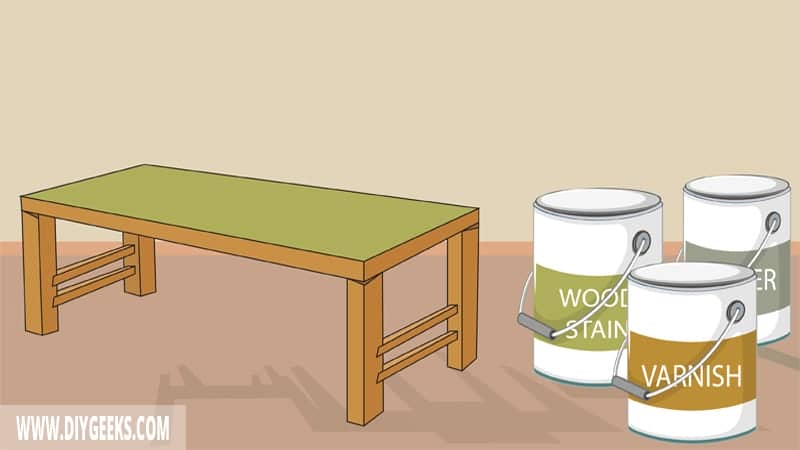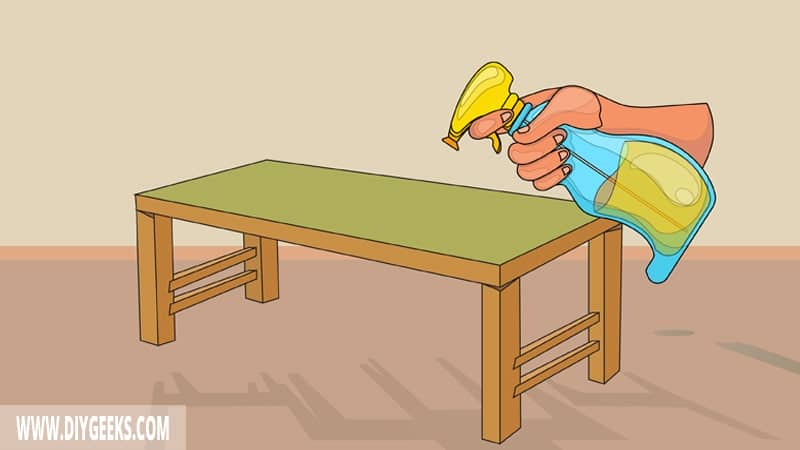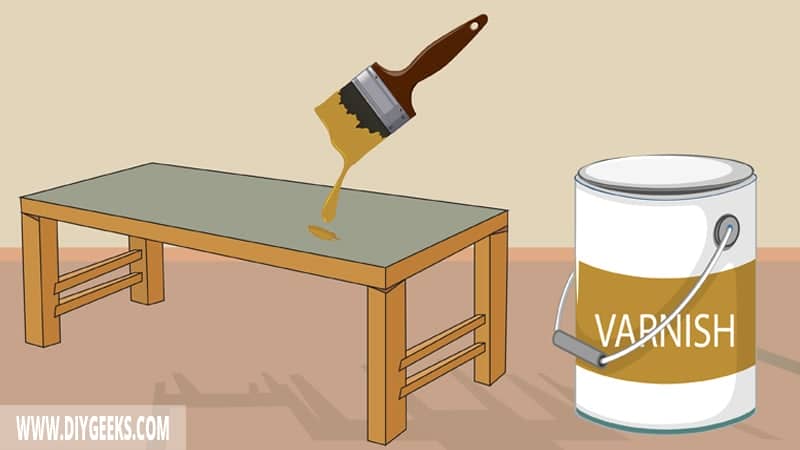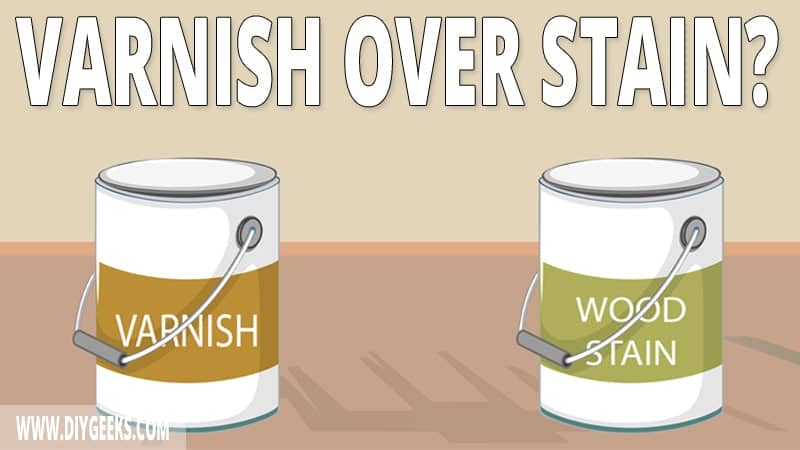You can apply varnish over wood stain to protect it from moisture, water, and scratches. When dry, varnish produces a clear protective coating that will protect the finish underneath it.
To apply varnish over wood stain, prepare the work area, clean the finish, sand the finish, and apply the varnish.
Since varnish produces a clear coating (with no color) it won’t interfere with the wood stain color. But, the stain must dry (for 3 days) before sealing it with varnish.
You can mix wood stain with varnish to get a colorful and durable finish. You can’t apply wood stain over varnish as it won’t adhere properly.
How Long Must Wood Stain Dry Before Varnish?
Water-based wood stain must dry fully (cure) for about 24 hours while oil-based wood stain must dry fully (cure) for about 48-72 hours before varnish.
The exact cure and dry time of wood stain depends on the humidity levels, room temperature, and the brand you are using.
For the stain to dry and cure, the solvent must evaporate, and its coating must oxidize (harden). Since water evaporates faster than oil, the water-based stain dries faster.
The finish will turn sticky and peel off if you apply varnish too soon. That’s because varnish will stop the evaporation process and prevent the paint particles from hardening. Since the solvent can’t evaporate, the finish will turn sticky and won’t dry.
So, it’s best to wait until the finish is fully dry (cured) before you seal it.
Related Read: Varnish vs Stain?
How To Apply Varnish Over Wood Stain?
To apply varnish over wood stain, do the following things.
- Prepare the Work Area
- Clean the Finish
- Sand the Finish.
- Apply the Varnish.
The tools you need for this project are listed below.
- Dish Soap
- Rags
- Sponge or Wire brush
- A bowl of water
- Medium-grit sandpaper
- Fine-grit sandpaper
- Spray gun or paintbrush
- Water-based Primer
- Varnish (Satin, medium, or high-gloss)
1. Prepare the Work Area

Prep the work area by removing nearby objects and covering objects that you can’t move. Use painter’s rape to cover surface parts you don’t want to seal.
2. Clean the Finish

Clean the finish to remove dust, debris, and dirt that can prevent the varnish from adhering. Since varnish is a clear sealer, it can highlight surface imperfections, dust, and dirt.
To clean the finish, do the following things.
- Mix dish soap with water.
- Pour the soapy water over the surface.
- Use a soft brush to clean the surface.
- Rinse with clean water.
If the stain was recently applied, you don’t need to wash it– just use a clean rag to wipe off the surface. Also, if the finish is sealed with a top coat, you must remove it.
3. Sand the Finish

Sand the wood stain finish with ultra fine-grit sandpaper (440-grit) to remove surface imperfections and bumps, and create a smooth layer.
Use fine-grit sandpaper (220-grit) if the wood stain finish is riddled with too many imperfections or bumps. Don’t use coarse or medium-grit sandpaper (40/100-grit) as it can remove the entire finish.
If the wood stain finish is loose, swollen, flaky, or damaged, remove the entire finish with coarse-grit sandpaper and re-apply it. If you apply varnish over a loose or flaky stain finish, the finish will look worn out.
4. Apply the Varnish

Apply two (2) varnish coats over the wood stain finish using a paint sprayer or roller. The varnish coating will increase the finish’s durability and protect it from water, moisture, and scratches.
Wait until one coat dries before applying the next one.
Note: You don’t need a primer coating between wood stain and varnish.
Can You Mix Wood Stain with Varnish?
You can mix wood stain with varnish to get a colorful and durable finish. Varnish is a clear sealer (it doesn’t have pigments or colorant) and produces a transparent finish. So, mixing it with wood stain (that has lots of pigments) will produce a durable and colorful finish.
Varnish has protective additives in its formula that make its finish resistant to water, moisture, and scratches. While wood stain doesn’t have protective additives and isn’t resistant to water. So, mixing them will produce a durable finish, too.
But, you must match their types or solvents (oil-based or water-based). If you mix water-based stain with oil-based varnish (or vice versa), the mixture will produce an inconsistent finish that won’t adhere properly.
Can You Apply Wood Stain over Varnish?
You can’t apply wood stain over varnish unless you remove or sand it first. When dry, varnish produces a protective coating that repels moisture (or liquids). The protective coating will prevent wood stain from penetrating the surface or sticking.
The wood stain will stick only if you remove the sealer (varnish) or sand its top coating off. Sanding will create tiny pores in the coating for the stain to soak (penetrate into). But, the finish won’t be as durable if you do this.
It’s recommended to remove the entire finish first, and then apply the wood stain to get the best results. So, don’t apply wood stain over varnish directly.
Wood stain is designed to alter the wood color and highlight its natural grain. If there’s another coating on the wood, the stain won’t penetrate the surface nor alter the color.
Related Read: Does Wood Stain Protect Wood?


